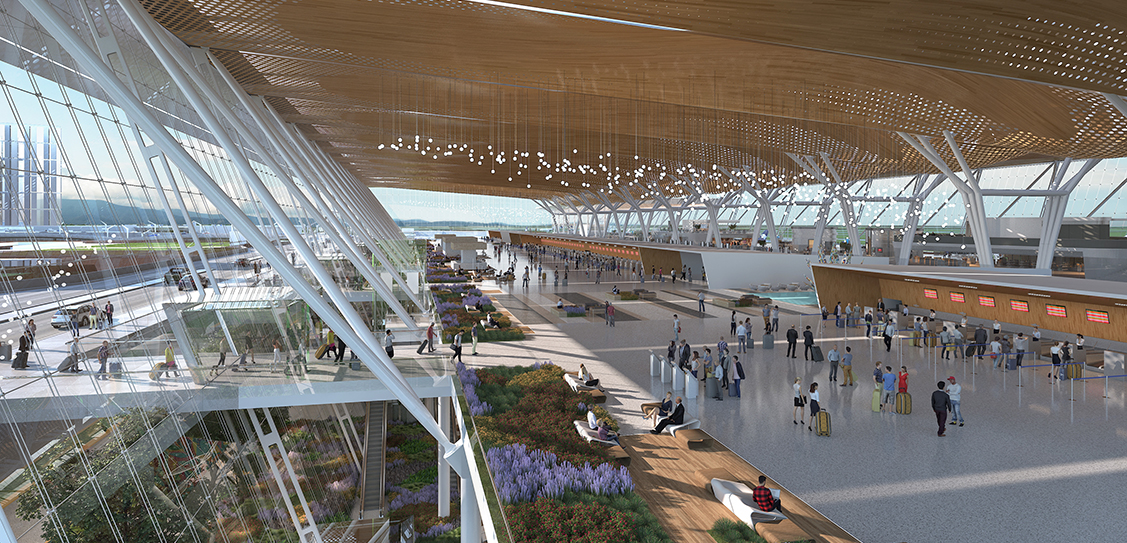CallisonRTKL’s design for Guadalajara Airport’s Terminal Two encompasses a holistic design approach that not only brings together the local folkloric music, dance, food, and symbols of the city, but also tells a tale of regionalism through a concept recognised as “The Soul of Guadalajara.”
Mexico’s alluring and rich canyons, which are home to a variety of unique vegetation, provided inspiration for the lush, green elements throughout the interior of the terminal.
Designed with passenger comfort as the backbone, the airport is accessed by multiple points of entry. Design with soaring light-filled spaces in a parklike setting, the terminal design incorporates the use of design elements that are largely modeled after the textures and colours of the vast, beautiful fields of agave, paying homage to this key ingredient in the production of tequila.
A vital part of connecting to the future is Guadalajara Airport’s campus-wide-goal of being net zero energy. To reach this goal, multiple environmental strategies have been set in place throughout the airport to reduce energy use by 60% and the carbon footprint by 90%.
CRTKL’s proposed terminal would emit 2,814 metric tonnes of CO² each year, a staggering difference when compared to a typical medium sized terminal.
Unperceivable to passengers and guests, the building’s responsive technologies interweave with the human experience. Some of these are improved daylighting, insulation, glare control, shading, natural ventilation combined with economiser cooling, high performance mechanical systems, and building management systems.



